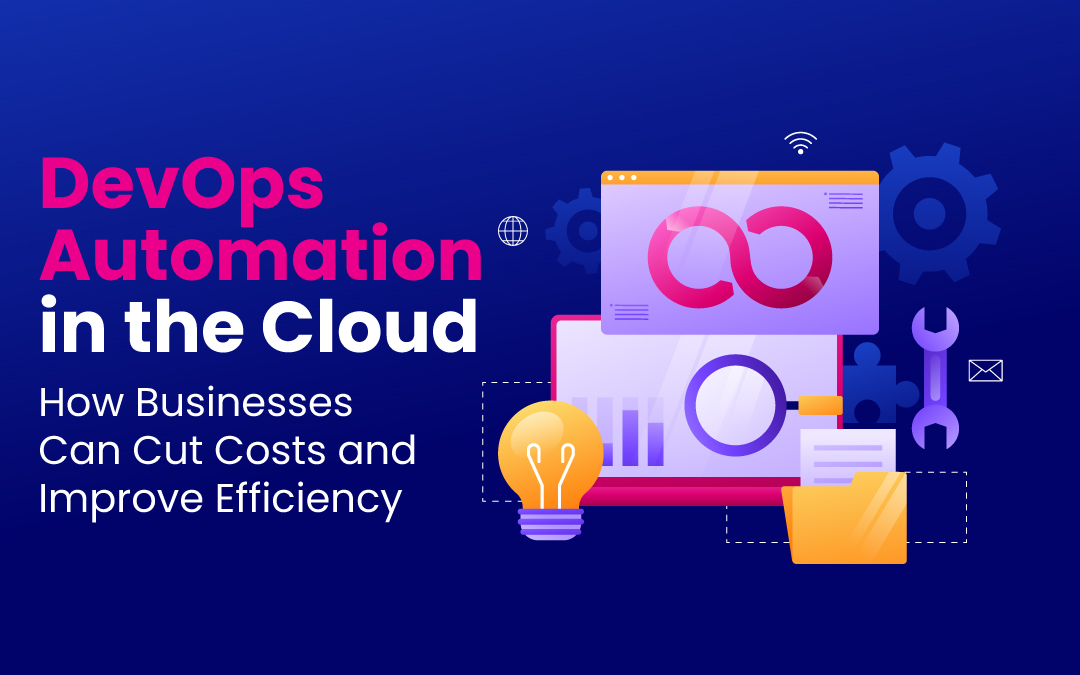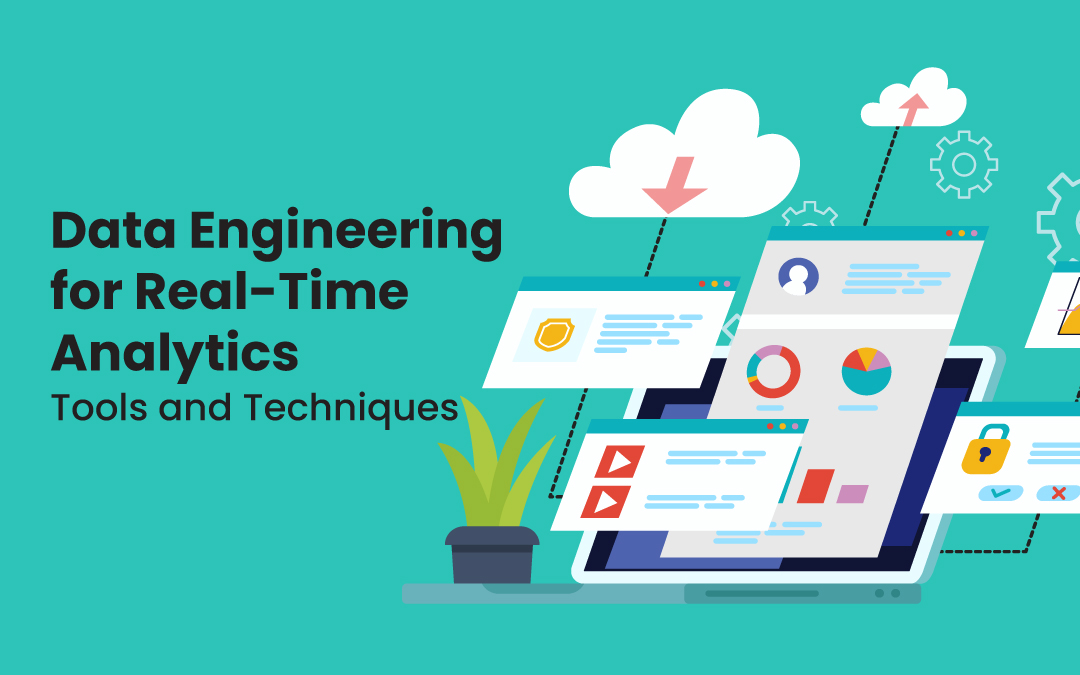
In today’s fast-paced digital world, businesses are constantly seeking ways to improve operational efficiency, reduce overheads, and stay ahead of the competition. One of the most transformative strategies they are turning to is DevOps automation in the cloud.
This approach not only streamlines processes but also helps businesses cut costs while enhancing productivity. In this article, we’ll dive into the details of how DevOps automation in the cloud achieves this, using human-centric examples and practical insights.
Understanding DevOps Automation in the Cloud
Before we delve into its benefits, let's break down what DevOps automation in the cloud really means. DevOps is a set of practices that brings development (Dev) and IT operations (Ops) teams together, aiming to shorten the system development life cycle while delivering high-quality software.
Automation in DevOps refers to the process of automating repetitive and manual tasks in the development pipeline, such as code testing, integration, and deployment. When this automation takes place in the cloud, it leverages cloud infrastructure and services, providing flexibility, scalability, and cost-efficiency that on-premises environments often lack.
The Human Cost of Manual Processes
Imagine a traditional IT team managing a software release. Developers write the code, testers manually test it, and the operations team manually deploys it to production. These steps are often time-consuming, error-prone, and frustrating for the team involved.
Not to mention, manual interventions can delay product releases, increase overhead costs, and demotivate teams due to repetitive tasks. Now think of a scenario where automation handles these processes: code is automatically tested, built, and deployed with minimal human intervention.
This frees up your IT teams to focus on innovation rather than firefighting operational bottlenecks. DevOps automation, especially in the cloud, brings this vision to life.
How Businesses Save Costs with Cloud-Based DevOps Automation
1. Reduced Labor Costs
One of the most immediate cost-saving benefits of DevOps automation in the cloud is the reduction of labor costs. Automated systems handle many of the repetitive tasks that would typically require human intervention. Partnering with a DevOps consultancy can also help businesses optimize these systems to ensure that automation is tailored to specific operational needs.
For example, Continuous Integration and Continuous Delivery (CI/CD) pipelines automated code testing and deployment processes, meaning fewer manual hours spent on these tasks. Companies can reallocate their development teams to focus on higher-value activities like improving customer experiences or developing new features, rather than spending time on repetitive, low-value tasks.
Example: A mid-sized e-commerce company uses automation for their deployment processes. Without automation, every software update required several days of developer time for testing, patching, and deployment.
After implementing cloud-based DevOps automation, this time shrunk to mere hours, saving hundreds of hours annually in developer costs.
2. Optimized Infrastructure Utilization
Cloud platforms like AWS, Azure, and Google Cloud provide businesses with the flexibility to pay only for the resources they use. Traditional infrastructure requires businesses to purchase and maintain expensive servers, which are often underutilized during non-peak times.
In contrast, with DevOps automation in the cloud, businesses can dynamically scale their infrastructure based on real-time demands. This elasticity allows businesses to avoid over-provisioning resources, which leads to significant savings in operational costs.
For example, automated scaling policies can reduce the number of servers during non-peak hours, and then scale up during high-traffic periods, ensuring you are only paying for what you need.
3. Faster Time-to-Market Means Greater Revenue Potential
Automation significantly speeds up development cycles, leading to faster product releases. When businesses can deploy new features or updates quickly, they can respond to customer demands more effectively, improving the overall user experience.
This agility not only enhances customer satisfaction but also opens up new revenue streams. For example, a software company using DevOps automation in the cloud can quickly push updates to fix bugs or release new features, keeping them competitive in the market.
A faster time-to-market means the business is more agile, can seize opportunities faster, and increase its revenue potential sooner than its competitors.
4. Minimized Downtime with Automation
Unplanned downtime can be disastrous for businesses, leading to lost revenue and damaged reputations. Cloud DevOps automation helps minimize downtime through automatic failure detection and recovery processes.
Automated monitoring tools continuously check the health of applications and infrastructure, allowing teams to quickly resolve issues before they impact the end users. For example, if a server becomes overloaded, automated systems in the cloud can detect the issue and spin up additional servers to handle the load, reducing the chance of downtime.
How Efficiency Is Improved with DevOps Automation in the Cloud
1. Streamlined Collaboration Between Teams
DevOps automation breaks down traditional silos between development, operations, and testing teams by creating a single workflow that everyone can follow. Automated systems foster seamless collaboration by providing real-time visibility into the development pipeline, helping teams identify bottlenecks and resolve them quickly.
The result is a more efficient, agile organization where teams are working together toward common goals, rather than isolated in their own processes.
Example: A healthcare software company improved its release cycle by adopting automated cloud DevOps tools that provide visibility across teams. This integration allowed their development, QA, and operations teams to work in sync, cutting the release cycle time by 40%.
2. Enhanced Security Through Automated Testing
Incorporating security practices into the DevOps automation process, often referred to as DevSecOps, ensures that security checks are automated and embedded at every stage of the development pipeline.
By doing this in the cloud, companies can continuously scan for vulnerabilities, apply security patches, and ensure compliance with regulatory standards, all without manual intervention. Automation ensures that security is never an afterthought but an integral part of the development process.
This leads to fewer security breaches, safeguarding both company data and customer trust.
3. Continuous Monitoring and Proactive Problem Solving
In a cloud DevOps environment, automated tools constantly monitor application performance, resource usage, and system health. Yet, businesses can face DevOps challenges related to configuring these tools to suit their specific needs. Understanding how to tailor monitoring systems for proactive issue resolution is key to reaping the full benefits of automation.
This proactive approach reduces the likelihood of major outages or system failures, allowing teams to focus on future improvements rather than firefighting.
Humanizing the Impact of DevOps Automation
At the end of the day, automation in DevOps is not just about saving money or improving processes—it’s about empowering people. By automating the mundane and repetitive tasks, businesses allow their employees to focus on creative, strategic, and value-adding activities.
This leads to happier, more engaged employees, and a more innovative business culture. Additionally, when businesses save money through automation, they can invest those resources in developing their teams, exploring new business opportunities, or improving customer experiences.
DevOps automation in the cloud isn’t just a technical solution; it’s a human-centric strategy that improves the way businesses operate on all levels.
 FAQs
FAQs
DevOps automation in the cloud refers to automating repetitive processes within the DevOps lifecycle—such as code testing, integration, and deployment—using cloud infrastructure. This automation allows for faster, more efficient development, scaling, and maintenance of applications.
By automating repetitive tasks, DevOps automation reduces the manual labor required for testing, deploying, and managing software, saving time and labor costs. Additionally, cloud services offer on-demand resource scaling, meaning businesses only pay for the resources they use, reducing the costs associated with traditional on-premises infrastructure.
Key benefits include:
- Cost savings through optimized resource usage and reduced labor costs.
- Faster time-to-market due to automated deployment pipelines.
- Improved collaboration across teams.
- Enhanced security through automated security checks and vulnerability scans.
- Minimized downtime through proactive monitoring and automatic scaling.
Efficiency is improved by automating manual processes, speeding up the software development lifecycle, enhancing collaboration between development, operations, and testing teams, and enabling continuous monitoring and automatic troubleshooting of issues.
Yes, small businesses can benefit significantly from DevOps automation in the cloud. Cloud services offer flexibility and scalability without the upfront costs of traditional infrastructure. Automation allows smaller teams to focus on core business tasks by handling the time-consuming manual work.
DevOps automation reduces downtime by using automated monitoring and alerting systems that detect and address issues in real-time. Automated scaling ensures systems can handle traffic spikes, while recovery processes can automatically initiate to avoid prolonged outages.
Related Posts
Share this post
Leave a comment
All comments are moderated. Spammy and bot submitted comments are deleted. Please submit the comments that are helpful to others, and we'll approve your comments. A comment that includes outbound link will only be approved if the content is relevant to the topic, and has some value to our readers.



Comments (0)
No comment